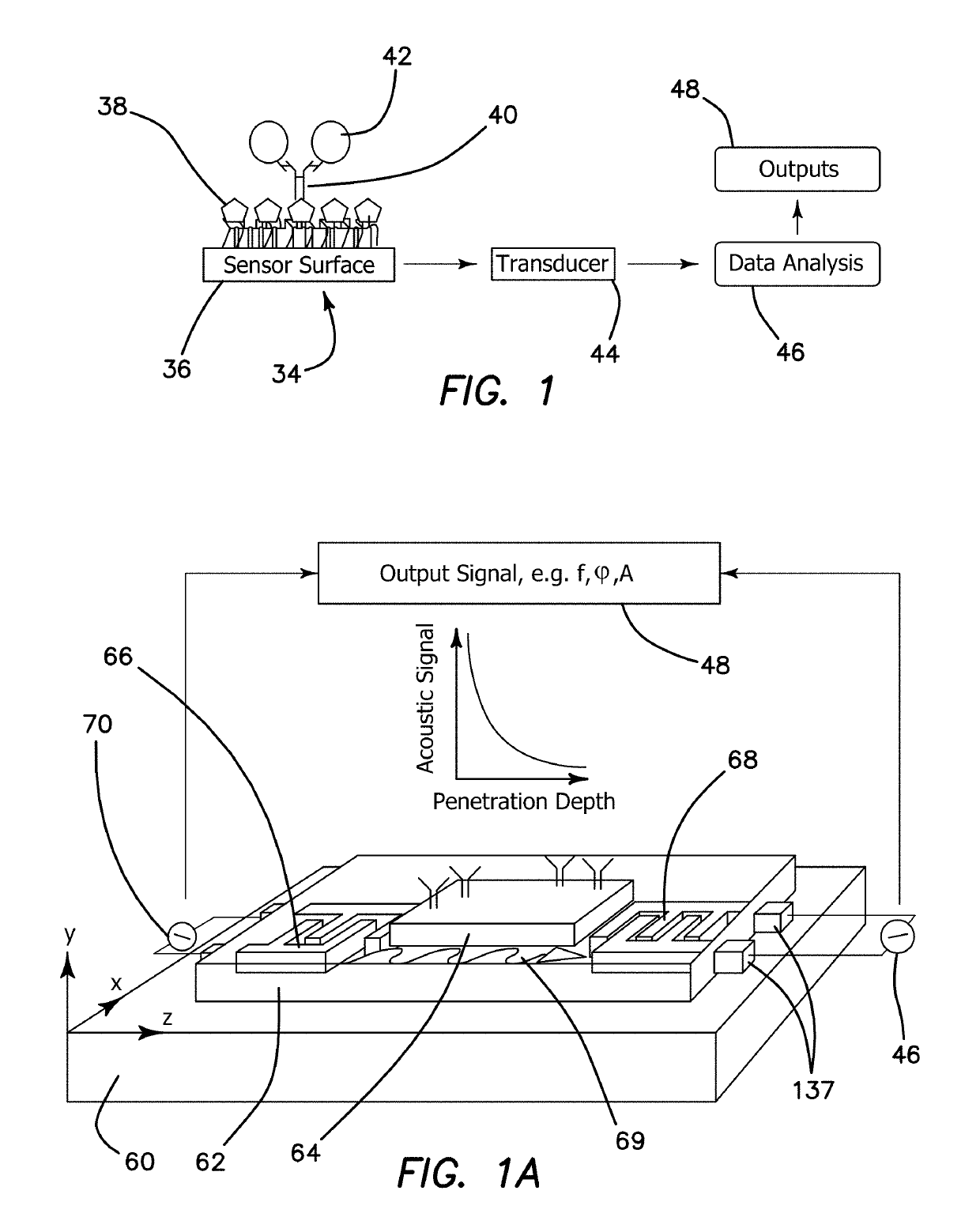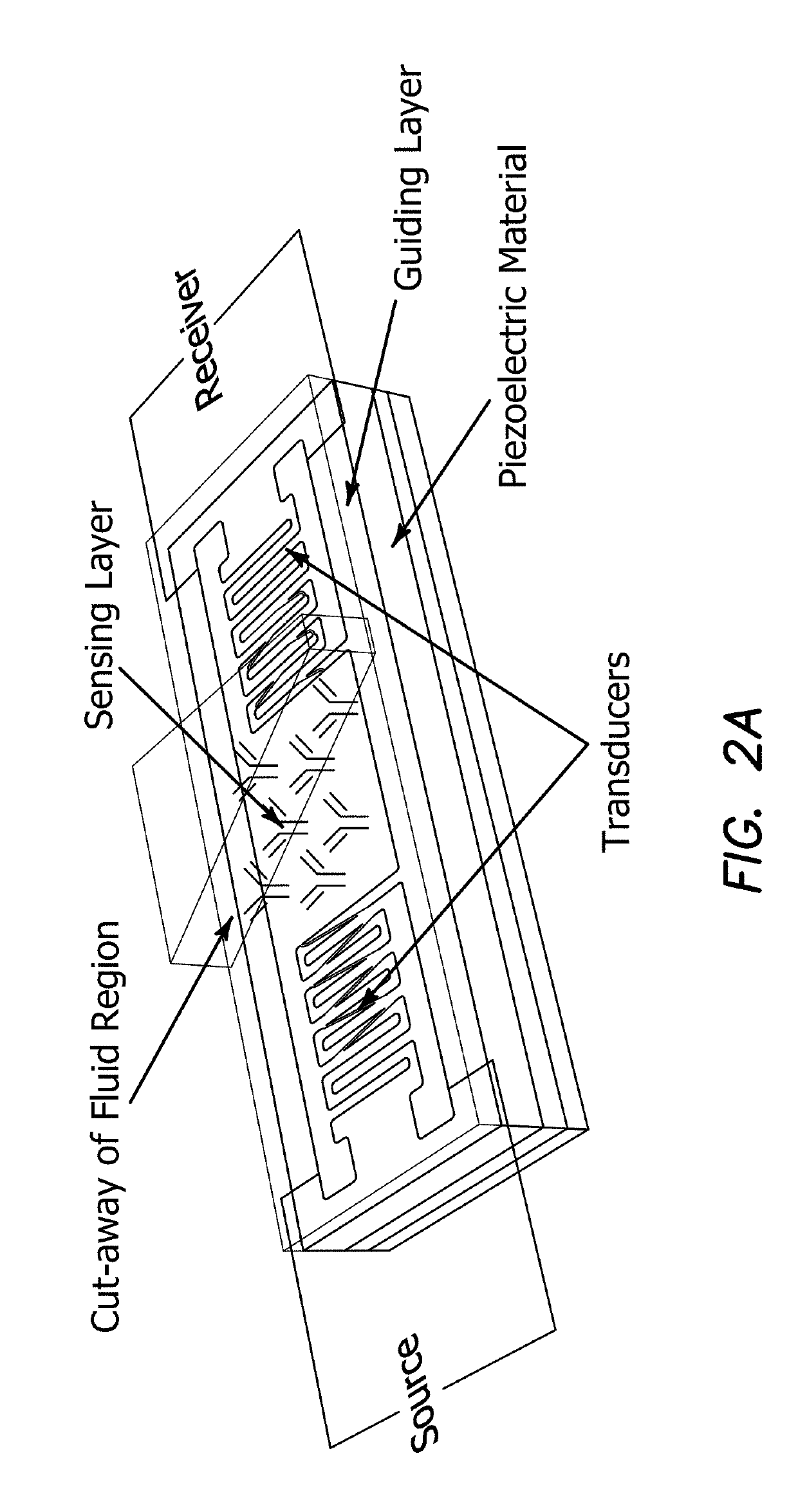Surface Acoustic Wave Biosensor Employing an Analog Front End and DNA Encoded Libraries to Improved Limit of Detection (LOD) with Exemplary Apparatus of the Same
- Summary
- Abstract
- Description
- Claims
- Application Information
AI Technical Summary
Benefits of technology
Problems solved by technology
Method used
Image
Examples
Embodiment Construction
[0180]Principle of Operation of Saw Devices
[0181]Surface Acoustic Wave-Sensor-Boundary Conditions
[0182]The aim of this introductory section is to set the theoretical as well as engineering guidelines to achieve a biosensor platform where the limit of detection (LOD) is capable of detecting an analyte concentration in femtomolar level. Setting the boundary conditions for such an objective must include the elements, which form the sensor construction, be it the physical characteristics of the resonator, the crystal oscillator, the geometry of the interdigitated electrodes, the chemical probes and their functionalization as well as the biological probes, which determine the sensor specificity. These facts and other considerations in forming such a platform is further complicated by the fact that biological signal measurements are sensitive to the kinetics of hybridization where such information is essential in evaluating the resultant data.
[0183]This application addresses the boundary ...
PUM
| Property | Measurement | Unit |
|---|---|---|
| Angle | aaaaa | aaaaa |
| Length | aaaaa | aaaaa |
| Length | aaaaa | aaaaa |
Abstract
Description
Claims
Application Information
 Login to View More
Login to View More - R&D
- Intellectual Property
- Life Sciences
- Materials
- Tech Scout
- Unparalleled Data Quality
- Higher Quality Content
- 60% Fewer Hallucinations
Browse by: Latest US Patents, China's latest patents, Technical Efficacy Thesaurus, Application Domain, Technology Topic, Popular Technical Reports.
© 2025 PatSnap. All rights reserved.Legal|Privacy policy|Modern Slavery Act Transparency Statement|Sitemap|About US| Contact US: help@patsnap.com



